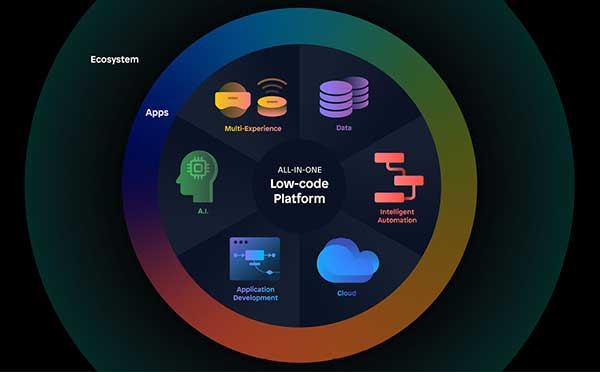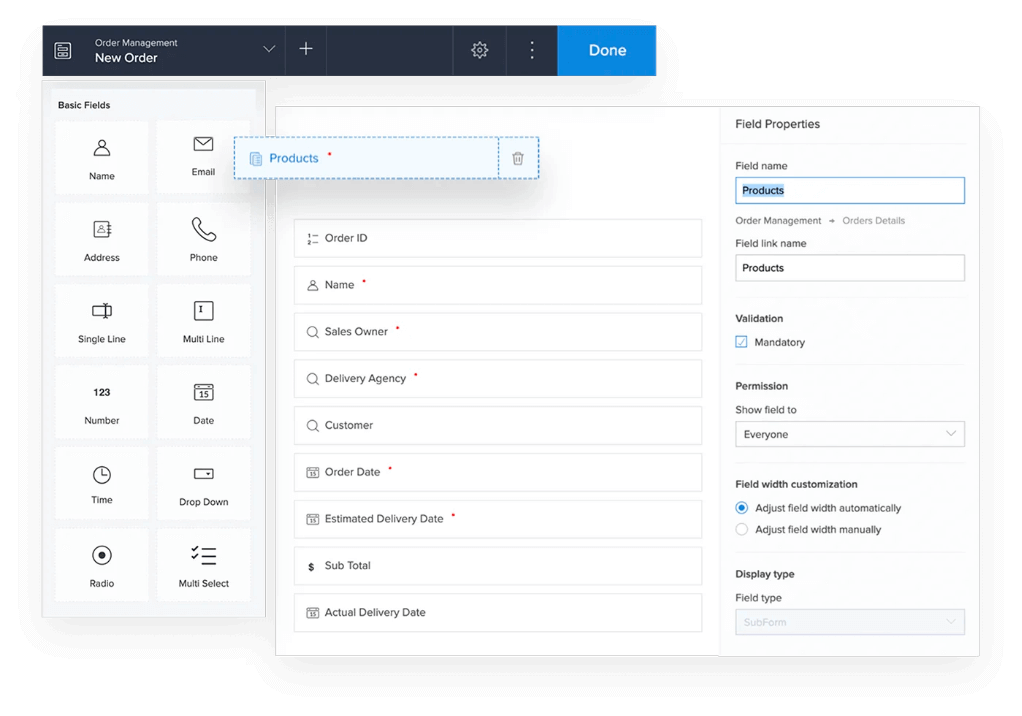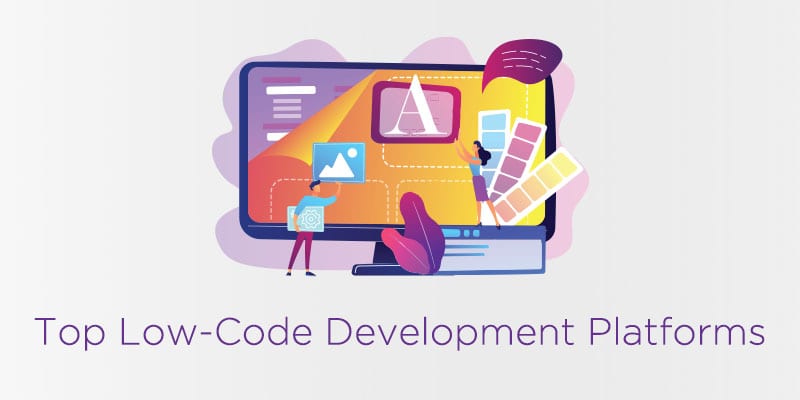New News To Selecting application development with Low-code platforms
Wiki Article
Benefits Of Low-Code Development To Non-Developers With Regard To Accessibility
Due to a number of factors the development of low-code applications is easier to non-developers. They are commonly referred to as "citizens developers."
Drag-and-Drop Builders: Low-code systems provide drag-and-drop interfaces that allow people who are not developers, and without the necessity of writing code, to develop visually-based applications. This makes development easier for those who have little or no technical knowledge.
WYSIWYG editor: The "What you see is what you will get" editors allow users to design interfaces, workflows, and other features in a manner which closely resembles the final result. They are simpler to comprehend and make use of.
Simplified Workflow and Logic Design:
Visual Workflow Modelling: Users can use visual workflow to design business procedures, application logic, and flowcharts using models as well as visually-designed flowcharts. These methods are much more intuitive than the conventional coding techniques.
Low-code platforms are often equipped with pre-built logic components (e.g. the conditional statements, loops) which eliminate the need for complicated programming.
Reusable Templates and Components
Library of Pre-built Templats Many Low-Code platforms have a collection of templates based on the most common types of applications. Non-developers will be able to customize these templates if needed.
Reusable Widgets and Modules Users can leverage reused widgets and modules, streamlining the creation process and reducing the requirement for technical knowledge.
Guided Development and Tutorials
Step-by-Step guide: Platforms provide instructions and help on screen to non-developers who are building applications.
Interactive Tutorials: Interactive and hands-on tutorials allow users to learn through doing. They gain confidence by making use of the platform.
Integration with Existing Tools
Seamless Integration: Low-code platforms are designed to seamlessly integrate with existing tools and systems in business (e.g. the ERP or CRM) This lets non-developers to develop applications to work within current workflows.
APIs and Connectors : APIs integrated into connectors and APIs enable users and non-developers to connect applications to external services, without the need for complicated programming.
Collaboration Features:
Team Collaboration Features, like real-time collaboration as well as shared workspaces, help non-developers and professionals to work together efficiently.
Role-based Access Control: You can give non-developers certain roles that correspond to the appropriate access level so that they are able to participate in the development process without compromise on security or function.
Automated Testing and Debugging
Low-code platforms are often equipped with debugging and testing software that automates these processes. This makes it easier for non-developers to check their applications function correctly.
Error Highlighting: Whenever problems occur, the platform highlights errors and suggests fixes, guiding non-developers through troubleshooting steps.
The main benefit of developing low-code applications in terms of accessibility to non-developers stems due to its ability to decentralize the process of development. Low-code platform platforms empower business users with easy-to-use, visual and guidance tools. They are then able to actively contribute to the development and maintaining applications. Take a look at the recommended Low-code Platform for application development url for blog advice including rapid app development, rapid applications, app modernisation, application modernization software, driver jdbc, app dev platform, app development platform, cross platform mobile development, push notifications, no code platforms and more.

Scalability And Flexibility Are Two Advantages Of Low Code Application Development
Low-code application development offers a variety of advantages, including scalability and flexible application design. These are essential for creating applications that can respond to changing requirements and grow with the business. Here are three key benefits.
Cloud-Based deployment: Many lowcode platforms run on the cloud, which enables applications to scale with the underlying infrastructure. Businesses can handle more load without having to worry too much about server administration.
Auto-Scaling Functions: Auto-scaling features can be used to adjust resources automatically according to demand. They guarantee that performance is constant during peak times.
Flexible Architecture:
Modular design: Low-code platforms are a fantastic way to encourage modular applications. These allow components to be developed independently as well as tested, sized and so on. Modularity allows for greater flexibility, and it's simpler to upgrade specific components of an app without having to alter the entire system.
Microservices Architecture: Microservices architecture supports the creation of applications as a loosely coupled set of services. This allows for greater capacity and flexibility.
Customizable Solutions
Extensibility Low-code systems typically allow for custom-written code and scripting. This lets developers expand the functionality of applications beyond what comes out of the box. This allows for the fulfillment of specific business requirements without limits.
Third-Party Integrations: Integration with third-party APIs or services allows companies to add more functionality to their software.
Agile Development and Deployment:
Continuous Delivery and Deployment : Low-code platforms can support agile methodologies enabling continuous integration, continuous delivery (CI/CD). This allows for rapid deployment of updates and new features, while ensuring that the application can be updated quickly in response to feedback from users and market shifts.
Iterative Development: The nature of low-code development ensures applications are able to be incrementally improved and scaled, reducing the risks associated with large-scale modifications and allowing for more controlled growth.
Resource Optimization
Efficiency in Resource management: Low-code platform tools assist in optimizing the use of resources by monitoring and managing performance of applications. This lets resources be efficiently used, and they can also be increased or decreased according to the need.
Load Balance: This function lets the application manage massive traffic by distributing workloads over several servers. It also ensures the performance remains consistent.
Global Reach
Multi-Region Accessibility: Lowcode platforms allow for deployment across multiple regions. Businesses can provide users high-speed, low-latency global access. This is important, especially for applications that serve global users.
Support for Localization The built-in support for localization lets the software be easily tailored for various languages and needs in different markets.
Updates and maintenance
Low-code applications are visually and are modularly built, which makes it easy to do maintenance. Updates and bug fixes are made quickly and without extensive downtime.
Version Control - Integrated versions control systems can assist you in managing updates, rollbacks and other changes. They will ensure that they can be released safely and previous version is restored as needed.
Cost Efficiency:
Low-code platforms cut down on development costs by reducing the requirement for extensive coding. They also make it possible to scale applications without significant cost or effort.
Pay-as-you go models: Many platforms for low-code provide flexible pricing options, like pay-as-you go model that aligns prices and usage with the actual growth.
Low-code development offers businesses a number of advantages, such as scalability, flexibility and ad-hoc flexibility. This lets them develop robust, flexible and scalable applications. These platforms are able to quickly adjust to changing demands and make the most efficient use of resources, and constantly improve, allowing apps and businesses alike to grow and develop. See the top rated wavemaker.com coding for website tips including azure sql databases, microsoft azure sql, application modernization, application modernization, application modernization, application modernization software, push alerts, sso azure, push notifications, rapid applications and more.

Benefits Of Low-Code Application Development In Terms Of Customization And Constraints
The low-code method is an unbiased method that allows for extensive customization, and also addresses the limitations. These are the advantages:
Overcoming Complexity Barriers
Simplified Development: Low-code platform reduces the complexity of development by providing components and templates that are pre-built, allowing to speed up development and deployment.
Many platforms feature guided workflows, which help developers to navigate through complex procedures. They minimize the risk of making mistakes and help maintain consistency.
Scalability Solutions:
Scalability is built into low-code platforms. They are often equipped with features that allow for scaling architecture. This allows applications to handle higher loads without requiring massive re-development.
Performance Monitoring: Using tools for performance monitoring as well as tuning, optimization and tuning can help applications scale efficiently.
Security and Compliance
Low-code platforms come with security options, such as role-based security access control as well as encryption and automated checks for compliance. These features address commonly-asked security issues.
Regular Updates: Platforms often upgrade their security protocols and compliance procedures. This ensures applications remain secure from new threats.
Customization Options:
Extensibility:
Custom Code Integration: Low-code platform often allows the integration of customized code (e.g. JavaScript, Python) which enables developers to extend the functionalities beyond what is available in the standard features.
Developers can create customized modules or plugins to meet the specific requirements of business.
APIs and integration
API Support: A full API support is available to enable seamless integration and connection with external systems.
Third-Party Services: Low code platforms provide connectors that are pre-built for popular third-party services. This makes it simpler to build and integrate applications.
Flexible Design for UI/UX:
User interfaces that can be customized: Developers can alter and design the user interfaces to fulfill specific branding requirements as well as user-friendliness requirements, creating an experience that is customized for users.
Responsive Web Design Responsive Web Design: Built-in design responsive capabilities allow applications to be customized in accordance with the screen size and device.
Business Logic Customization:
Visual Workflow builders They allow developers to develop complex processes using little or no programming. They can create workflows and business logic visually.
Conditional Logic and Scripting: Platforms permit the inclusion of conditional logic as well as custom scripting to handle specific business rules and scenarios.
Data Management:
Custom Data models: Developers are able to define custom data model that meet the specific requirements of an application and make sure that data handling complies with business requirements.
Advanced Data Processing Integration and advanced data handling tools permit the customization of the data analysis process and utilization in the program.
How to balance customisation with limits:
Frameworks and Standards
Low-code platforms comply with industry standards and best practice. This helps maintain secure and high-quality applications.
Governance Frameworks. Built-in frameworks of governance guarantee that modifications will not compromise the security, compliance or the integrity of the software.
Iterative Design and Feedback
Rapid Prototyping. The capability of quickly prototype and test modifications allows developers to tweak the application based on user feedback. This allows them to improve the app in order to better meet the requirements of users.
Continuous Improvement: Low-code systems allow continuous improvement, which allows for ongoing customization and enhancement when business requirements change.
User Empowerment
Giving Citizen Developers the ability to be empowered by giving non-developers the capability to modify their applications using simple interfaces as well as low-code platforms, they can increase the number of contributors who can enhance and tailor application.
Support and Training: Many platforms have extensive resources for training and support to assist users to make effective modifications without compromising the stability of the application or performance.
In general, low-code development offers a robust system for dealing with limitations, as well as a wealth of opportunities to personalize. This balance ensures businesses can create and maintain apps that are tailored and efficient to meet their individual requirements while maintaining high standards of quality, safety and the ability to scale.
